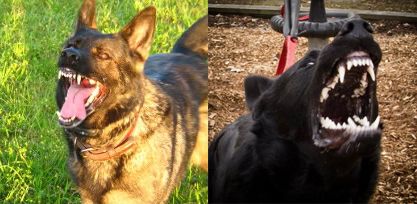I will answer question (2) first. My experience is not only with decades of training dogs, but with working with wolves and wolfdog behavioral issues. I have been a consultant to small zoos to solve behavioral problems in wolf exhibits, and have worked on dogs, wolves and wolfdogs of private owners.
1) Based on wolf packs, female alphas are more often the pack leader over male alphas. Also, the dominant, especially male; is less likely to be aggressive than a beta, unless challenged. If challenged, an alpha will attack. Dominant males (whether alphas or betas) will fight until one male submits. If neither will submit (common with terriers), the fighting can become lethal. Females, especially intact or near their heat cycle; are more territorial to their homes/dens and if they fight other, females will not stop when one submits, but only when one leaves the home/den area. Such fights are less common than male fights, but more lethal, especially if there is nowhere for one to escape to away from the area claimed.
Most of the time, the male dog who demonstrates beligerence is a beta, not an alpha. But that does not mean he is safer. In fact the opposite is true as a beta is often trying to prove himself. He is the macho type who acts tough.
Terriers are particularly prone toward dog aggression and are not deterred by dog several times their size and weight. It is too bad that the Jack Russell's aggression wasn't dealt with while he was still a puppy and not well established.
2) Yes two dominant, or one dominant dogs can learn to live together safely, but if aggressive to the point of fighting, they should always be under supervision when together. Success willdepend not only on what you both do, but on establishing that you AND your boyfriend are the pack leaders and you won't tolerate any bickering, let alone fighting.
Before reintroduction, teach each dog the watch me with treats and marking, separately. Then move to stays which include the watch me, increasing the time between the command and reward. Do not do this within the presence of the other dog!
The first reintroduction should be with both dogs on leash. Best if each is being worked on ob at the same time at a distance and then brought closer. Don't wait to see how they will react to each other, but as soon as they see each other give rapid fire ob commands and heeling with lots of turns. Interpserse with sits and the watch me, and stays while asking the dog to keep his attention on you. At first, do the sits and stays with the dogs facing away from each other.
Move away and toward each other and gradually, over several training sessions, get closer. But if either begins to lose it, keep at that distance. Once you can have the dogs working close and sitting close without any tensing, staring, or any other signs of aggression, you can move on to the next phase. (be careful of giving treats when they are in close proximity as the food might trigger a food aggression response)
Have one dog loose, but on a long line or dragging a lead, on one side of a fence; and the other the same on the other side. You should be with your boxer and your bf with his terrier. If either begin signs of aggression, take hold of lead/line for control and do some ob. When the dogs can meet and sniff at each other through the fence, you can try having them in the same yard or enclosure, but on a leash or long line and holding the the line close enough to be able to stop an attack, yet not tight. If all goes well, release your grip on the line of one dog, probably the boxer mix would be best. Throughout the whole process intersperse with brief times of ob work.
Eventually let one dog drag a line loose and the other be off the line, but with a tab or something you can grip easily if needed. Otherwise the lines might get tangled and then if anything goes wrong, you can't separate them quickly. Do NOT grip tab or collar if a fight breaks out! It is too dangerous once they are actually fighting. Watch their body language. Look for any tension. You should prevent any escalation by taking the line, tab or collar to reinforce the commands you will put the dogs under at the slightest sign of tension.
Some dogs are too intensely dog aggressive to ever be safe together, especially if they have been in several fights before. But many dogs can have their aggression controlled, even though it is still there under the surface. This is why I say never leave them alone unsupervised, even when they seem to be getting along!
 Previous Topic
Previous Topic Index
Index Next Topic
Next Topic













 Top
Top



 Yep, this is a beginner speaking.
Yep, this is a beginner speaking.



